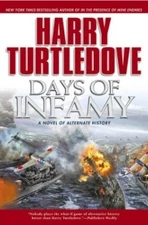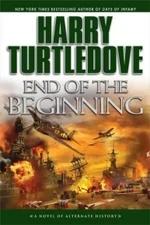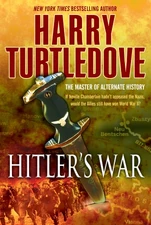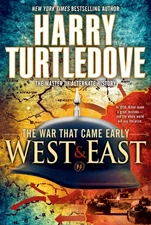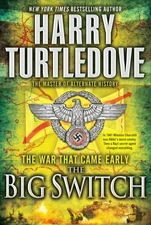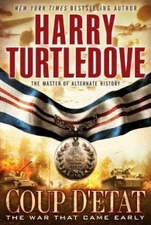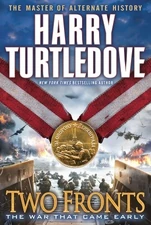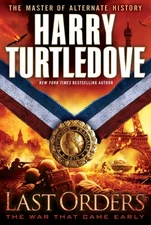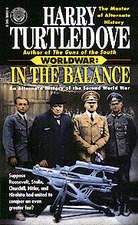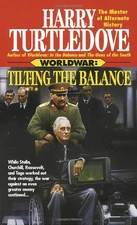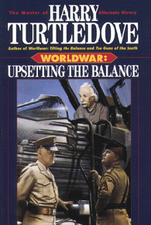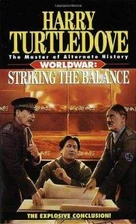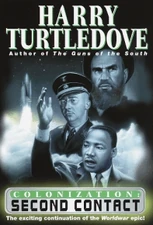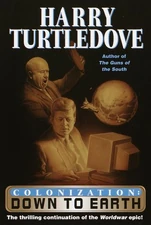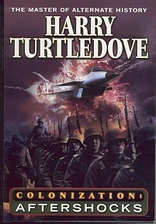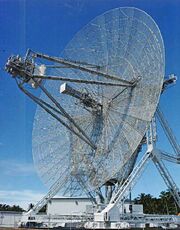
Radar is an object-detection system that uses radio waves to determine the range, angle, or velocity of objects. It can be used to detect aircraft, ships, spacecraft, guided missiles, motor vehicles, weather formations, and terrain. A radar transmits radio waves or microwaves that reflect from any object in their path. A receive radar, which is typically the same system as the transmit radar, receives and processes these reflected waves to determine properties of the object(s).
Radar was secretly developed by several nations in the period before and during World War II. The term RADAR was coined in 1940 by the United States Navy as an acronym for RAdio Detection And Ranging. The term radar has since entered English and other languages as a common noun, losing all capitalization.
Radar in Days of Infamy[]
Radar was a completely unknown technology to the Japanese at the start of World War II. Following the Japanese invasion of Hawaii, American installations of radar technology in Hawaii were deliberately destroyed by their respective handlers from falling into Japanese hands. After the raid on San Francisco, Mitsuo Fuchida informed Lt. Saburo Shindo of the existence of Radar. Lt. Shindo was alarmed at its existence and shocked by the Americans' inability to use it to their advantage. His fears about Radar were put to rest when Minoru Genda informed him that prisoners who were experts on the technology were already in Tokyo working with their own engineers, and they already had some trial installations in place even as they spoke.
From then onwards, many in the Imperial Japanese Navy High Command in Hawaii, constantly feared the Radar technology because it gave the enemy the upper hand in battle, and tried to keep it hidden from their subordinates. They constantly wished that their own technicians would hurry up and reverse engineer the technology so that they could use it themselves.
Although the new technology did arrive in Hawaii to be installed on the Akagi in time for the Second Battle of the North Pacific, it still didn't make a difference to the outcome of the battle.
Radar in "News From the Front"[]
On December 22, 1941, The New Yorker revealed the existence of an electronic range finding device to the public while it was reporting on the inept response to the Japanese strike at Pearl Harbor and the Philippines. The next day, the Washington Post reported that this device was called Radar, and that the Japanese did not have it.
Radar in Southern Victory[]
The technology of wireless range finding, the Y-Range, was developed by many of the major powers shortly prior to or during the Second Great War. As the conflict progressed, ships and eventually night fighting aircraft were equipped with Y-range, which enabled the early detection of approaching adversaries.
Radar in The War That Came Early[]
Radar was a highly classified technology when World War II began in 1938. It was effectively used by the British in defence of their island.
Radar in Worldwar[]
On Earth, radar was a relatively new technology to humans. Britain used radar during World War II to track German planes to overcome the numerical superiority of the Luftwaffe.
By comparison, radar was widespread in the Race's society for both civilian and military application. Starships and civilian aircraft used them for navigation, as did its Killercraft and transport aircraft in wartime. Ground based anti-air missile batteries used radar to track and fire on targets. Anti-radiation missiles designed to home in on radar signals were one of the weapons capable of being mounted on killercraft.
During the Race Invasion of Tosev 3, all the major British radar stations in southern England that had been tracking the Germans were destroyed by the Race's killercraft. Any attempts to build new radars were discovered and destroyed almost immediately, forcing Britain to rely on spotters to track air attacks. Since stationary radar sites weren't an option, the British later developed radar sets that could be fitted into a Lancaster bomber, allowing them to use the Lancaster as an airborne electronics platform to coordinate RAF fighters against the Race's killercraft. When killercraft fired anti-radiation missiles at the plane, the British simply turned the radar off. Every single time, the missile would lose its target and detonate harmlessly in the air.
As males and anti-air missiles became scarcer in the later stages of the invasion, Race soldiers automated human anti-air guns by linking them to radar arrays to provide their bases with air protection from infrequent but still deadly Tosevite air attacks.
By the 1960s, radar was standard for all the human powers' air and space forces.
| |||||||||||||||||
| |||||||||||
| ||||||||||||||||||||||
| |||||||||||||||||||||||||
